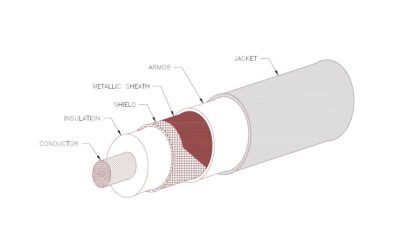Commissioning at an Ontario hospital required a wide scope of testing the electrical components.
In Canada, the St. Catharines Site is a comprehensive acute care hospital for Niagara Health Systems located in St. Catharines, Ontario. CannonDesign was selected to provide independent commissioning services for the nearly 1-million-sq-ft facility. Together with the contractor; mechanical, electrical, and plumbing (MEP) engineers; design engineer; and additional consultants, the commissioning scope included design-phase evaluation and construction-phase services consisting of shop drawing review, development of functional performance testing requirements, and system witness testing of the following electrical system components:
- Medium- and low-voltage power distribution systems
- Emergency generator systems
- Isolated power and high-resistance grounding (HRG) systems
- Lighting and control systems
- Motor control systems
- Uninterruptable power supply (UPS) systems
- Receptacles.
Offsite factory witness testing was also performed for several key electrical systems including the UPS and generator systems. In addition, two modular double-conversion battery-based UPS systems were specified to serve the hospital’s operating rooms and recovery suite. These UPS were tested at the manufacturer’s testing facility prior to shipping to the installation site. The factory tests included subjecting the units to a 24-hour, 100% load burn-in test to verify that the systems are able to operate at rated loads in their intended ambient environments without thermal overload. Additionally, the units were tested to verify performance in response to dynamic and unbalanced loads as well as various overload conditions. Meters with waveform capture were used to document the ability of the UPSs to regulate the output voltage to meet the load requirements.
Testing of the emergency power system consisted of a combination of several intermediate steps. First, the three 2,000-kW diesel generators were tested individually at the factory and then again with the paralleling switchgear at a third-party location prior to being brought to the installation site, where they received a final acceptance test. A complete prefunctional startup checklist was followed prior to energization of the system, and each generator was independently tested at the third-party location with a load bank prior to being connected to the switchgear. After the individual components were proven, the system was energized using temporary feeders selected to simulate the permanent cable impedances. Multiple load banks were connected to the feeder breakers to simulate the load of the different essential system branches. After all functional performance tests were completed, which included multiple failure scenarios, the system was delivered to the hospital site for final installation, startup, and acceptance testing.
Lessons learned
One of the first challenges that had to be overcome during functional performance testing was trying to accurately simulate the final conditions of the electrical system for the hospital at the UPS testing facility. Because the UPS units would be used to provide power for the hospital’s operating rooms, the specifying engineers required that the system be connected through a neutral grounding resistor for operation as an HRG system. This required additional measures to be taken for the testing setup to accommodate this type of grounding arrangement. Additionally, verifying the harmonic performance of the UPS units could not be accurately measured at the testing facility because of the influence of other equipment on the testing facility’s bus; subsequently, performance verification was done onsite to ensure that the owner’s requirements were met.
Functional testing of the generators also had its challenges. To extend the run time available from the onsite fuel storage, the generators were specified with a third-party dual-fuel system using natural gas as the supplemental fuel source. As a third-party modification, the dual-fuel system testing was only able to be tested at the final installation site. Load banks were again used for the functional performance tests, which revealed the need to make several key modifications to the fuel delivery piping to maintain proper gas flow when operating in a dual-fuel mode, which was targeting a mix ratio of approximately 40% diesel to 60% natural gas. Additionally, through the commissioning process, it was discovered that a time delay within the generator controls was necessary to maintain diesel operation after the termination of natural gas flow to fully purge the system.
Michael Steward has focused on the design and commissioning of electrical power systems for the health care and mission critical facilities as an associate vice president with CannonDesign.



